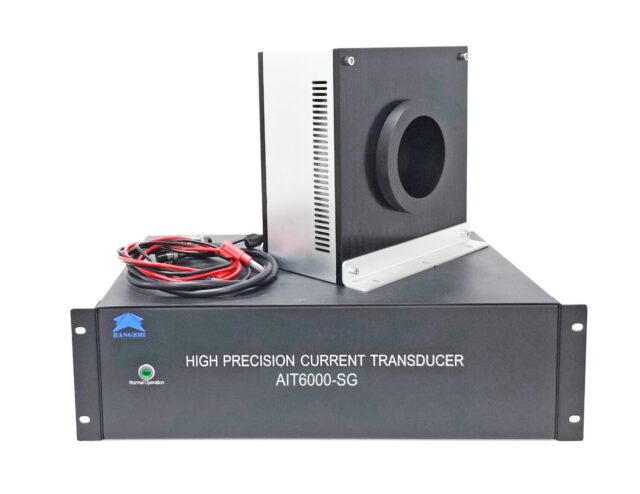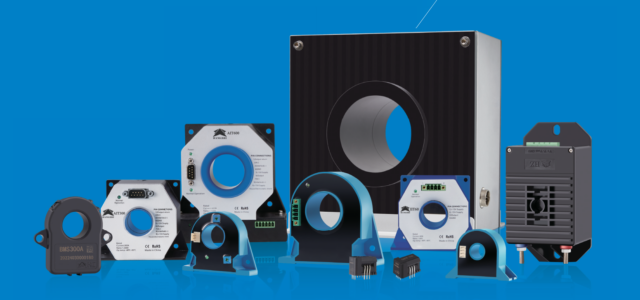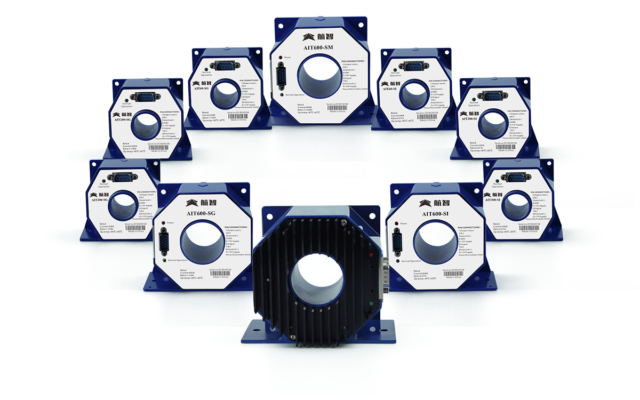
In the vast and intricate realm of electrical engineering, a multitude of devices act as unsung heroes, quietly enabling the modern world’s technological marvels.
One such device, often overlooked but undeniably pivotal, is the current transducer. These unassuming instruments play a crucial role in contemporary electrical systems by translating the enigmatic flow of electric current into a tangible form, typically voltage or another comprehensible current, for measurement or processing.
This article embarks on an illuminating journey deep into the realm of current transducers, delving into their present forms, exploring their wide-ranging applications, and casting an anticipatory gaze toward the tantalizing possibilities that the future may hold for them.
A Comprehensive Introduction to Current Transducers

At its core, a current transducer is an ingeniously designed device that serves as a translator, converting the magnitude and phase of an electric current into another form of energy, most commonly a voltage. This seemingly mundane transformation serves a profound purpose in electrical engineering.
Directly measuring high currents can be an arduous, complex task with potential hazards. Current transducers come to the rescue by facilitating safer and more manageable readings. Broadly categorized into two primary types, they offer diverse solutions to an array of challenges:
Active Transducers
These dynamic instruments necessitate an external power source to function optimally. They diligently produce an output voltage that bears a direct, proportional relationship to the magnitude of the measured current. This way, active transducers empower engineers and technicians to precisely gauge and comprehend the currents coursing through various systems.
Passive Transducers
In stark contrast, passive transducers operate with an innate self-sufficiency, requiring no external power source to accomplish their mission. Instead, they ingeniously generate an output, often in the form of a change in resistance, that correlates directly with the magnitude of the current they are tasked with measuring. The elegance of passive transducers lies in their simplicity and autonomy, making them indispensable in specific applications.
Applications in Modern Systems: A Multifaceted Influence

The pervasive influence of current transducers extends across a vast spectrum of applications, traversing the domains of industry and residential life. Herein lies a glimpse into some of their most prominent and far-reaching applications:
Power Distribution Systems
The sprawling network of substations and power grids relies heavily on current transducers to fulfill their vital role in maintaining the equilibrium of electrical energy.
These vigilant devices monitor and manage the flow of electricity with unparalleled precision, serving as guardians against instability and unreliability. Their ability to promptly detect anomalies is instrumental in averting potential blackouts and ensuring uninterrupted power supply.
Consumer Electronics
The ubiquity of consumer electronics, ranging from smartphones and laptops to electric vehicles, hinges on the reliable operation of current transducers. These unassuming components within chargers and power adapters assume the pivotal task of regulating and directing the precise current to safeguard these valuable devices against potential damage, ensuring their longevity and functionality.
Industrial Automation
The heartbeats of modern manufacturing plants and assembly lines are the machines and equipment requiring precise and controlled amounts of current. Current transducers are indispensable in ensuring that these industrial workhorses operate at peak efficiency, optimizing productivity and minimizing downtime.
Renewable Energy Revolution
As the world shifts towards a sustainable and eco-conscious energy landscape, current transducers assume a prominent role in harnessing the power of renewable energy sources such as solar and wind.
These versatile instruments facilitate the conversion and seamless transmission of clean, green electricity to homes and businesses, propelling us towards a more sustainable future.
Advancements in Current Transducer Technology: The Path to Precision

The relentless march of technology has ushered in a new era for current transducers, marked by remarkable advancements and innovations. Here are some noteworthy milestones in their evolution:
Precision Redefined
Modern current transducers stand as paragons of accuracy. Their design and materials have undergone a remarkable transformation, resulting in a substantial reduction in measurement errors.
Engineers and scientists can now rely on these instruments to deliver measurements of unparalleled precision, enhancing the integrity of their data and decisions.
Miniaturization Magic
Current transducers have been included in an age where devices are shrinking in size yet expanding in capability. The relentless pursuit of miniaturization has yielded compact transducers that occupy a fraction of the space while delivering performance that matches or surpasses their larger counterparts.
This miniaturization trend has opened up exciting possibilities in applications where the area is at a premium.
Broadened Frequency Horizons
Traditional current transducers were often confined to specific frequency ranges, limiting their utility in diverse scenarios. However, modern iterations have broken free from these constraints, boasting the ability to handle lower and substantially higher frequencies.
This newfound versatility has expanded the reach of current transducers into previously uncharted territories, further solidifying their indispensable status in electrical engineering.
Smart Integration
In an era dominated by the Internet of Things (IoT), it’s no surprise that current transducers have also embraced innovative technology. Many contemporary transducers have integrated smart features that enable remote monitoring, predictive maintenance, and seamless integration with other interconnected systems.
This intelligent integration enhances their utility and ushers in an era of proactive maintenance and predictive analytics.
Challenges and Considerations: Navigating the Road Ahead
However, amid the breathtaking progress and innovations in the world of current transducers, several challenges and considerations loom, demanding the attention of engineers and researchers alike.
Coping with Increasing Demands
As modern electrical systems evolve and grow in complexity, the demands placed on current transducers continue to escalate.
The challenge lies in ensuring that these indispensable devices can handle the ever-increasing currents and voltage levels without succumbing to saturation or inaccuracies. Engineers must constantly innovate to meet these surging demands and uphold the integrity of measurements.
Weathering the Elements
Many current transducers find themselves stationed in outdoor settings, exposed to Mother Nature’s capricious whims. These instruments must endure various environmental challenges from blistering heat to torrential rain and cold.
Ensuring that current transducers remain weatherproof and capable of optimal performance under diverse weather conditions is a formidable challenge that engineers must address to maintain reliability.
Guarding Against Cyber Threats
In an interconnected world, security is paramount. Current transducers are vulnerable to hacking and unauthorized access like any other innovative technology.
The potential consequences of security breaches in critical electrical systems are severe, underscoring the need for robust cybersecurity measures to safeguard these essential devices and the systems they serve.
Looking to the Future: Anticipating Tomorrow’s Possibilities

Though rich in history and accomplishments, the world of current transducers is also ripe with potential and possibilities that beckon toward a future filled with innovation and utility.
As we hurtle towards a more electrified world, deeply interconnected by a web of electrical systems, the significance of current transducers is destined to soar to even greater heights. The roadmap ahead holds tantalizing prospects, including:
Further Miniaturization
In an era where size matters, current transducers will continue their relentless quest for miniaturization. Engineers will strive to shrink these instruments further without compromising their performance, making them even more versatile and adaptable to space-constrained applications.
Elevated Precision
The pursuit of precision will persist unabated. Current transducers will evolve to deliver measurements with levels of accuracy hitherto considered unattainable.
This enhanced precision will empower engineers and researchers to make even more informed decisions and push the boundaries of what is possible in electrical engineering.
Deeper Integration with Smart Systems
The rise of smart technology and the Internet of Things (IoT) will see current transducers becoming even more intertwined with intelligent systems.
This integration will unlock new frontiers in remote monitoring, predictive maintenance, and real-time data analytics, enabling a proactive approach to managing electrical systems.
Optimized for Renewable Energy
With the world’s growing emphasis on sustainable energy sources, current transducers will see a surge in demand for specialized variants optimized for renewable energy applications.
These advanced transducers will be pivotal in capturing, converting, and efficiently distributing clean energy, hastening the transition to a sustainable energy future.
In conclusion, current transducers, though often overshadowed by more glamorous innovations, are the unsung heroes of the electrical engineering world. Their unassuming yet indispensable role in translating the complex language of electric currents into a form we can comprehend cannot be overstated. As we stand on the precipice of a future electrified and interconnected like never before, the significance of current transducers will continue to grow, shaping the landscape of electrical engineering and paving the way for a more efficient, sustainable, and secure world powered by electricity.









